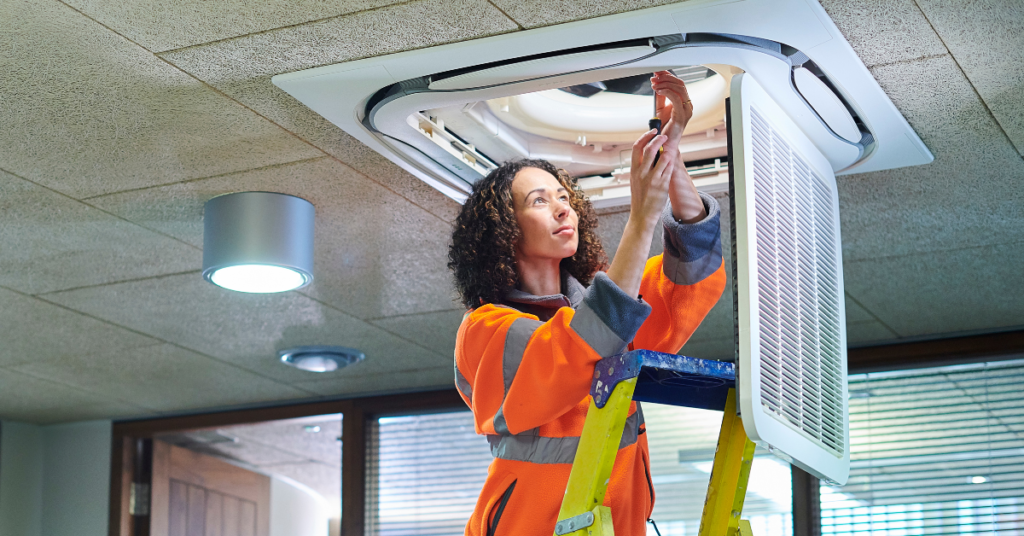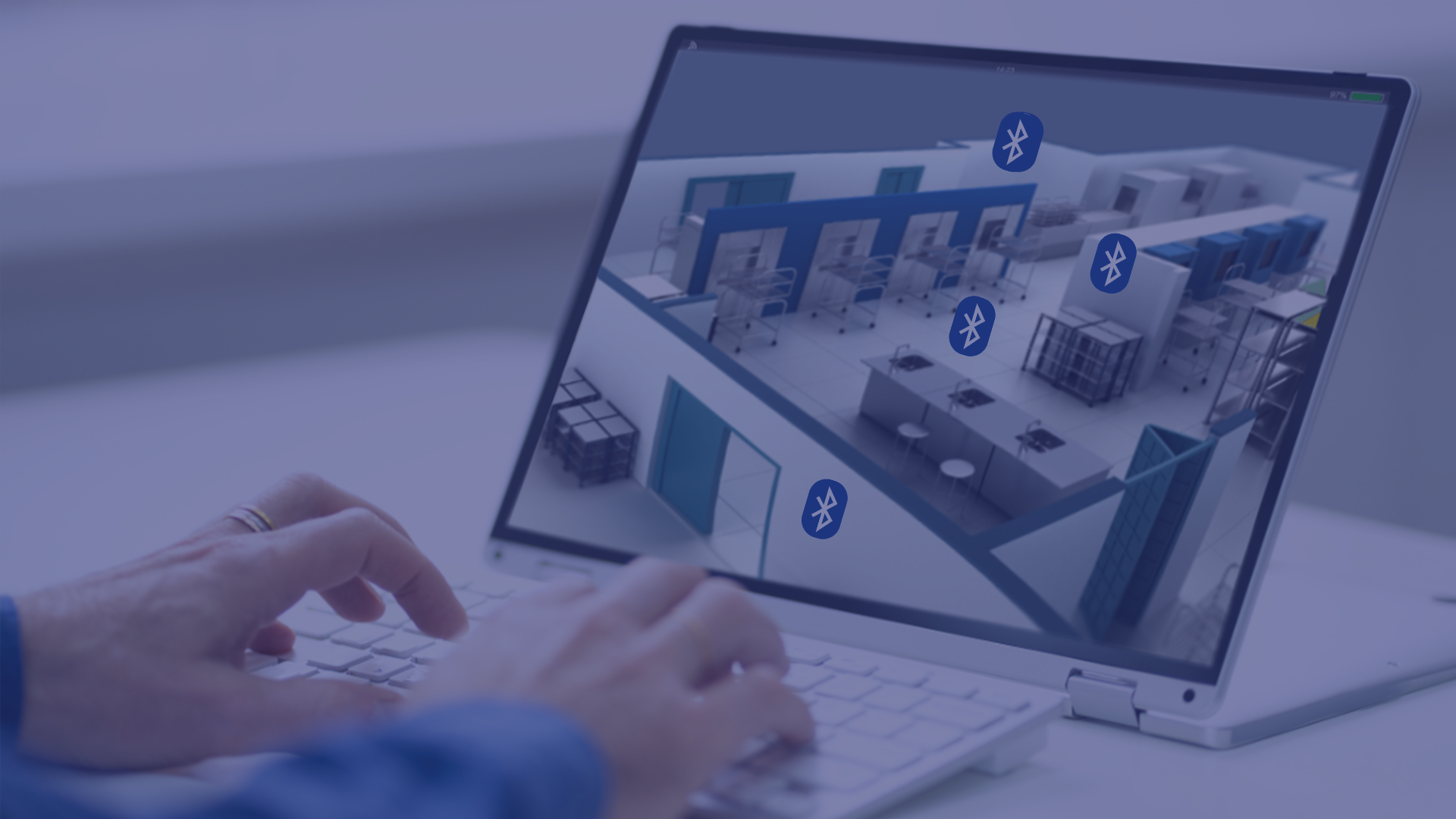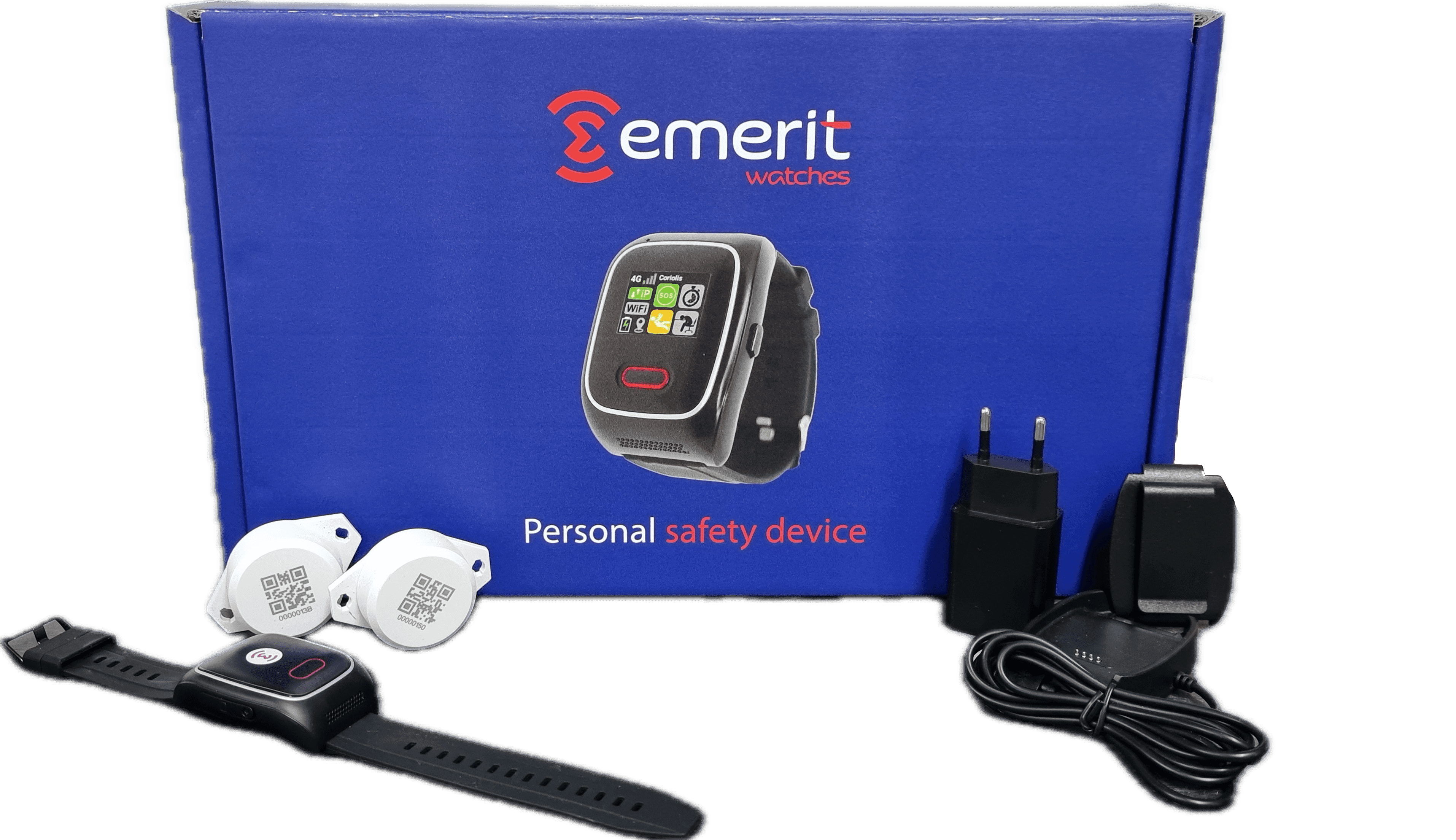Which are the benefits of locating a person in an emergency situation?
Whenever an employee finds himself in a high-risk situation, the question is how to be able to intervene quickly in the event of an accident, discomfort or aggression. The first answer is to provide them with a lone-worker alarm device enabeling them to activate an alert, either consciously using an SOS button, or automatically following the detection of a fall or prolonged immobility.
Depending on their place of work, it may be necessary to have an indication of the employee’s location if they don’t work in a fixed position and always at the same address, for example: a mayoral officer, a technician in a building, a delivery driver, cleaning staff in a hotel… When personnel move from site to site, GPS-based outdoor location is the most appropriate. However, when it comes to people working in buildings, GPS location becomes ineffective and alternative technologies need to be implemented.
Alarm devices, which provide precise information on the wearer’s location when an alert is activated, enable emergency and rescue teams to reach them more quickly, especially if they have lost consciousness and are unable to give any indication of their position. The sooner the person in distress is located, the quicker he or she can be rescued, which can prevent further injury or trauma.
Which technologies can be used to locate a person in a building (indoor location)?
There are three main indoor location technologies:
- Bluetooth Low Energy BLE: these are small electronic devices (3 to 5cm in diameter), also known as Bluetooth beacons, which are battery-powered and need to be installed in the various areas of the site to be covered, e.g.: offices, corridors, landings, staircases… These beacons emit a unique code at regular intervals on the Bluetooth radio frequency. Lone worker devices used by security personnel scan this same Bluetooth frequency and transmit the code of the nearest beacon in the event of an alarm activation.
Benefits: it’s a low-cost technology that can be implemented in any type of enclosed area. You can choose the density of beacons to be installed according to the level of precision required (floor, zone, office, etc.).
Note: we recommend a preliminary audit to determine the quantity and location of beacons. Regular maintenance is also required to change the batteries in each beacon. - Wifi: when a building is already equipped with a corporate Wifi network, it is possible to use the network of Wifi access points to process indoor location. For a given Wifi network name, each terminal permanently emits a unique identifier. called MAC address. The lone worker device scans the company’s WiFi network and transmits the code of the nearest terminal in the event of an alarm activation.
Benefits: there’s no need to add location equipment. Faster implementation.
Notes: the Wifi network was not originally designed for indoor tracking, but is optimized for connecting IT equipment. The layout of the terminals may therefore be irrelevant for location purposes. - ISM radio: these are medium-sized battery-powered beacons (approx. 12cm), which use the ISM 868 MHz radio frequency and need to be installed in the various areas of the site to be covered, e.g. offices, corridors, landings, stairways, etc. These beacons emit a unique code at regular intervals on the ISM radio frequency. Compatible lone worker devices scan this same ISM frequency and transmit the code of the nearest beacon in the event of an alarm activation.
Advantages: this highly reliable proprietary technology can be used in any type of enclosed area. You can choose the density of beacons to be installed according to the level of precision required (floor, zone, office, etc.).
Note: it is advisable to carry out a preliminary audit to determine the quantity and location of beacons. Regular maintenance is also required to change the batteries.
How accurate can GPS positioning be indoors?
While GPS location accuracy outdoors can be achieved to less than 5 meters when all technical and environmental conditions are met (good weather conditions, no natural or artificial obstacles, etc.), precise location inside buildings is more uncertain.
Indeed, as all indoor positioning technologies are based on the analysis of data reception emitted on the various radio frequencies of the transmitting beacons, their reliability is directly impacted by the density and nature of the building infrastructures concerned: materials used for partitions, doors and windows, type of flooring, etc. As radio waves are constantly subject to numerous obstacles and reflections, it is virtually impossible to achieve accuracy of a few meters. Another difficulty to overcome is the identification of different levels (floors and basements), as radio waves easily overcome obstacles such as floors.
When locating indoors, it is therefore preferable to determine characteristic zones for each floor, which will enable rescue teams to circumscribe their intervention perimeter. You need to find the right distance between beacons, the right transmitting power and, finally, the right positioning according to the expected result.

How do you provide location information to emergency personnel?
The first thing to do is to draw up a list of beacons with a unique number, their identifier (mac addresses or serial number) and a description corresponding to their location, e.g.: building D, ground floor, corridor A, opposite office 246. It is also preferable to have a set of plans of the various floors of the building(s) on which each beacon is positioned with its unique number. This list should be kept up to date and given to the teams responsible for responding to alarms.
If the emergency personnel is located on the same site – in this case, the system is managed internally – it is possible to provide them with supervision software on which the alarm will be displayed with the description associated with the location and/or the plan of the floor concerned with the positioning of the beacon selected by the device at the time of the alarm. This software can also be supplied in the form of a mobile application which will automatically issue a notification on receipt of the alert containing the location description.
If the devices are connected to a remote monitoring company, which is not on site, it will need to enter the beacon identifiers and their description into its alarm reception software. It is this description that will be displayed to the remote monitoring operator when the alarm is received.







